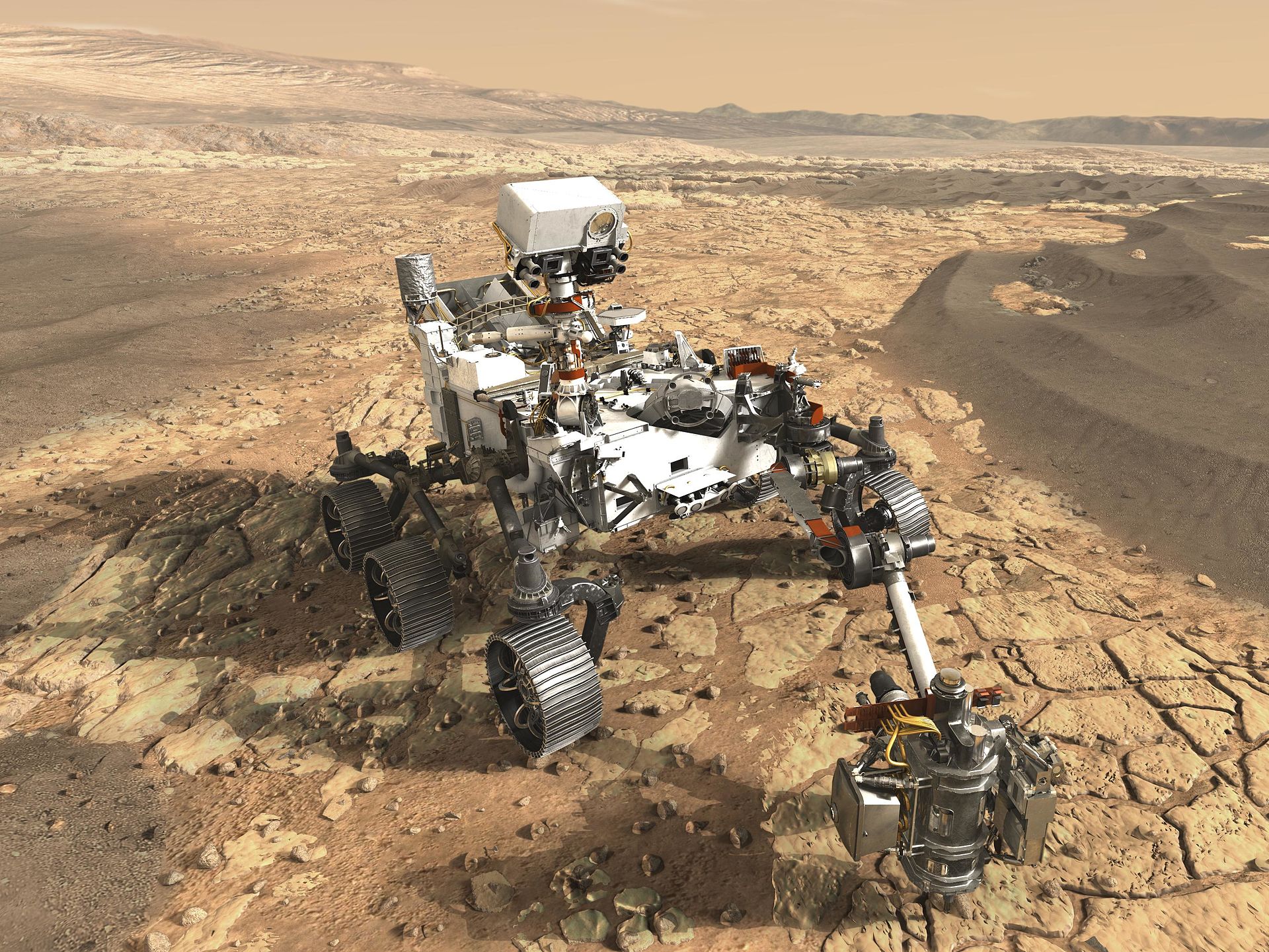
Over the years, NASA has successfully deployed several rovers, landers, and orbiters to Mars. While the science laboratories continue to provide invaluable data about the Red Planet, their limited, or zero — as is the case with landers — mobility, restricts the space exploration vehicles to areas close to the original landing site. To obtain a more comprehensive view of Mars, the US Space Agency plans to send a fully-autonomous miniature test helicopter with the Mars 2020 rover, scheduled for launch in July 2020.
“The ability to see clearly what lies beyond the next hill is crucial for future explorers,” said Thomas Zurbuchen, Associate Administrator for NASA's Science Mission Directorate at the agency headquarters in Washington DC. “We already have great views of Mars from the surface as well as from orbit. With the added dimension of a bird’s-eye view from a ‘marscopter,’ we can only imagine what future missions will achieve.”
The softball-sized "marscopter" weighs about four pounds and is fitted with two sets of rotor blades, which can spin at 3000 rotations a minute — about ten times the speed of helicopters on Earth. The light weight and rapid speed are essential for the aircraft to be able to fly in the thin Mars atmosphere, which is estimated to be just one percent of that of Earth. “To make it fly at that low atmospheric density, we had to scrutinize everything, make it as light as possible while being as strong and as powerful as it can possibly be,” Mimi Aung, Mars helicopter project manager at NASA's Jet Propulsion Laboratory (JPL), said in a statement. If successful, the tiny helicopter will be the first heavier-than-air vehicle to fly within Mars’ thin atmosphere!

To withstand the Red Planet's minus 195 degrees F (minus 125 degrees C) night-time temperatures, the "marscopter" has been fitted with a heating element, which uses solar-powered lithium-ion batteries. Since it won't be possible to communicate with the helicopter in real time from Earth, the device will be autonomous enough to receive and interpret commands from the ground, and then fly the mission on its own.
Upon landing on the Red Planet, the Mars 2020 rover will find a suitable location to release the helicopter so it can conduct its first test flight. The chopper will start with a short, vertical climb, no higher than 10 feet, and hover for just 30 seconds before landing back on the Mars surface. If all goes well, five additional flights of incrementally longer distances, for durations of up to 90 seconds each, will be conducted over the next 30 days. The short journeys will be documented by a small camera and transmitted to the eagerly-awaiting scientists on Earth.

If the "marscopter" fails to perform it will have little impact on the Mars 2020 mission. However if it works as planned, the chopper, the first to fly in another world, will open up a whole new way to explore Martian locations that are not accessible by ground travel. Susan Gorton, NASA’s manager for the Revolutionary Vertical Lift Technology (RVLT) project, says, "The Mars helicopter’s initial flight will represent that planet’s version of the Wright Brothers’ achievement at Kitty Hawk and the opening of a new era. For those of us whose research revolves around all things related to flight, that would be a remarkable, historic moment.”
Resources: room.eu.com, Forbes.com, NASA.gov
